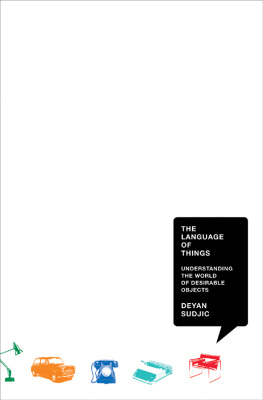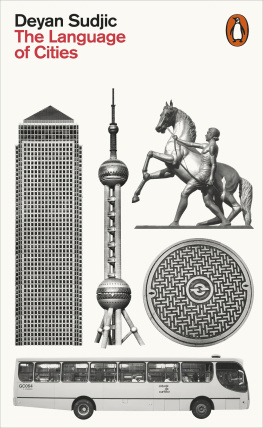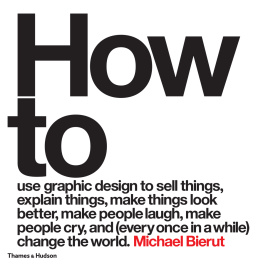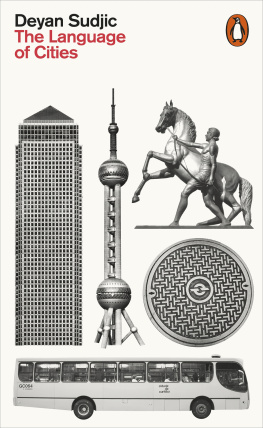
THE LANGUAGE OF
THINGS
understanding the world of desirable objects
DEYAN SUDJIC

CONTENTS
N EVER HAVE MORE OF US HAD MORE POSSESSIONS THAN WE DO now, even as we make less and less use of them. The homes in which we spend so little time are filled with things. We have a plasma screen in every room, displacing state-of-the-art cathode-ray-tube-based television sets just five years old. We have cupboards full of sheets; we have recently discovered an obsessive interest in the term thread count. We have wardrobes stacked high with shoes. We have shelves of compact discs, and rooms full of game consoles and computers. We have gardens stocked with barrows and shears and cutters and mowers. We have rowing machines we never exercise on, dining tables we dont eat at, and triple ovens we dont cook in.
We fill our kitchens with electric appliances, dreaming of the domestic fulfilment that we hope they will bring. Just as when fashion brands put their names to childrens clothes, a new stainless steel kitchen allows us the alibi of altruism when we buy it. We are secure in the belief that these are not indulgences but investments in the family. Our children have actual toys: boxes and boxes of them that they discard within days of acquiring. And, with childhoods that grow shorter and shorter, the nature of these toys has also changed. McDonalds has become the worlds largest distributor of toys, almost all of them branded merchandise linked to a film.
Nor have our possessions ever been bigger. They have swelled to match the obesity epidemic that afflicts most Western cultures. In part it is the result of what is known as product maturity. When every household that is ever going to buy a television set has done so, all that is left for manufacturers is to persuade owners to replace their old sets by inventing a new category. Sometimes its a miniature version, but, preferably for the manufacturer, it will be bigger and so better than the previous designs. As a result TV screens have gone from 28 inches to 60 inches. Domestic ovens have turned into ranges. Refrigerators have become bloated wardrobes.
Like geese force-fed grain until their livers explode, to make foie gras, we are a generation born to consume. But geese panic at the approach of the man with a metal funnel ready to be rammed forcibly down their throats, while we fight for a turn at the trough that provides us with the never-ending deluge of objects that constitute our world. Some of us camp outside Apple stores to be the first to buy an iPhone. Some of us pay any price to collect replicas of running shoes from the 1970s. The intricacies of model numbers, provenance and pedigree sustain a drooling pornography that fetishises sunglasses and fountain pens, shoes and bicycles, and almost anything that can be traded, collected, categorized, organized and ultimately possessed and owned.
The long boom that came to such an abrupt end has left us queasy at its excesses and the avalanche of products that threaten to overwhelm us. But governments have reacted to the threat of a slump by reminding their citizens of their duty to consume more to restart stalled economies. We are in the grip of millenarian anxiety about the doom that faces us if we go on binge flying. Yet even the return of the selling of indulgences, a practice abandoned by the medieval church, now resurrected in the form of carbon offset payments, is not stopping us from changing cellphones every six months.
In my own life, I have to acknowledge that I have been both transfixed and fascinated by the glossy sheen of consumption while at the same time becoming nauseous with self-disgust at the volume of what we all consume, and the shallow but sharp emotional tug that the manufacture of want has on us.
Objects, so many people believe, are the unarguable facts of everyday life. Dieter Rams, who for two decades was head of design at Braun, the German consumer electronics company, certainly did. He used to describe Brauns shavers and food mixers as English butlers, discreetly invisible when not needed, but always ready to perform effortlessly when called upon. Such things have become rather more than that.
Clothes, food, cars, cosmetics, baths, sunshine are real things to be enjoyed in themselves, John Berger claimed in Ways of Seeing (1972), the best-read contemporary analysis of visual culture to be published in the past half century. He made a distinction between real objects and what he saw as the manipulations of capitalism that make us want to consume them. It is important... not to confuse publicity with the pleasure or benefits to be enjoyed from the things it advertises, he argued. Publicity begins by working on a natural appetite for pleasure. But it cannot offer the real object of pleasure.
Berger wrote Ways of Seeing from an uncomfortable vantage point halfway between Karl Marx and Walter Benjamin. His book was an attempt to demolish the conventional tradition of connoisseurship, and to establish a more political understanding of the visual world.
Publicity is the life of this culture [the culture of capitalism] in so far as without publicity capitalism could not survive and at the same time publicity is its dream.
Capitalism survives by forcing the majority, whom it exploits, to define their own interests as narrowly as possible. This was once achieved by extensive deprivation. Today in the developed countries it is being achieved by imposing a false standard of what is, and what is not desirable.
But, even before the collapse of Communism and the explosion of the economies of China and India, understanding objects was more complicated than that. It is not just the imagery of advertising that is marshalled to manufacture desire. The real things that Berger regards as having authentic qualities the car with a door that shuts with an expensive click, and which evokes a 60-year tradition in doing so, the aircraft that integrates fuel efficiency with engineering elegance, and which makes mass tourism possible are themselves susceptible to the level of analysis that he applies to the late portraits of Frans Hals and to Botticellis allegories. They are calculatingly designed to achieve an emotional response. Objects can be beautiful, witty, ingenious, sophisticated, but also crude, banal or malevolent.
If he were writing Ways of Seeing today, what Berger calls publicity might just as well have been described as design. Certainly there is no shortage of those who have come to understand the word in as negative a way as Berger saw publicity.
Overuse of the word designer has rubbed it clean of earlier meanings, or left it as a synonym for the cynical and the manipulative. Bulthaup, a German kitchen manufacturer whose products are essential props in any design-conscious interior, even avoids the use of the word design in any of its advertising. Nevertheless the design of objects can offer a powerful way of seeing the world. Bergers book belongs to a crowded literature of art. However, since Roland Barthes wrote Mythologies in 1957, and the imprecisions of Jean Baudrillards The System of Objects , first published a decade later, few critics have subjected design to the same close analysis. It is an unfortunate gap. The architectural historian Adrian Forty comes close to Bergers point of view with his book Objects of Desire (1986). But now that the world of objects has erupted so convulsively, spraying product unstoppably in every direction, there is a quantitatively and qualitatively different story to tell from the conventional narrative of the emergence of modernism as the deus ex machina to make sense of the machine age.
Next page







